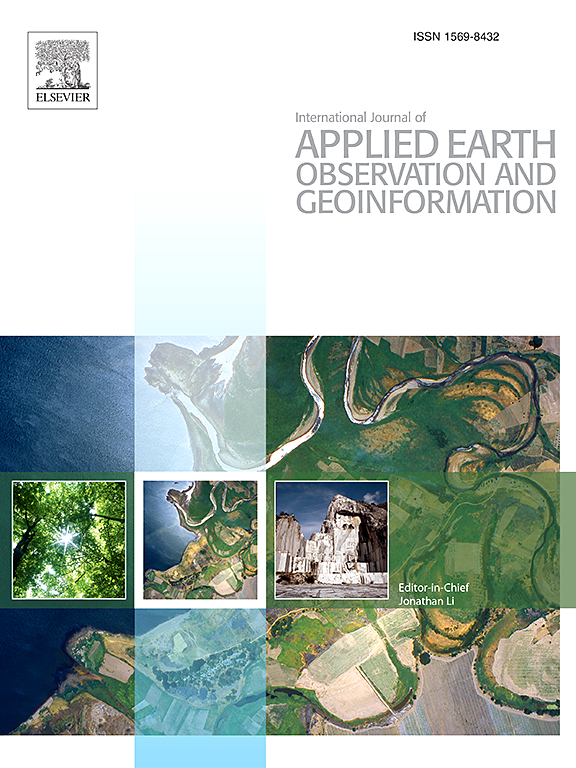A practical and efficient model for benthic habitat parameters retrieval in optically shallow waters from four-band multispectral imagery
IF 7.6
Q1 REMOTE SENSING
International journal of applied earth observation and geoinformation : ITC journal
Pub Date : 2025-03-17
DOI:10.1016/j.jag.2025.104475
引用次数: 0
Abstract
Water depth (H), bottom reflectance (), chlorophyll-a concentration (Chl) and seawater transparency (SDD) are key parameters in assessing shallow benthic habitats. However, due to limited in-situ data, restricted hyperspectral imagery or dynamic water quality, it is challenging to develop a generalized remote sensing model for decoupling water column and benthic signals across diverse regions and time periods. In this study, a Modified Log rotation Ratio and Semi-analytical (MLR-S) model is proposed for diffuse attenuation coefficient retrieval by adjusting inherent optical properties (P, G, X), from widely used four-band multispectral images without relying on truth data. A new Binary Quadratic Polynomial Relationship (BQPR) between P and the logarithmic values of blue-green bands was developed upon a sparse set of self-inferred points (SIPs). Then, large-scale and optimal was determined. Finally, using the monthly mean water column reflectance dataset constructed from 23-year MODIS data, , Chl and SDD can be efficiently derived. Synchronous validation at Dazhou Island confirmed the effectiveness of the MLR-S model, with mean relative errors of 23.77%, 15.26% and 9.91% for blue, green and red , respectively, and 36.69% for Chl. Further validation of in Heron Reef, Aitutaki Island and Buck Island demonstrated the model’s robustness across diverse habitats. Compared to the ICESat-2 Along Track Benthic Reflectance (ATBR) model, the MLR-S model yielded more reasonable and reliable in deeper waters. Additionally, it outperformed the traditional semi-analytical model, achieving greater accuracy while being over 100 times more computationally efficient. This model offers promising potential for large-scale, high-resolution monitoring of benthic habitats using four-band multispectral data, supporting improved understanding of reef health and informed decision-making.
求助全文
约1分钟内获得全文
求助全文
来源期刊

International journal of applied earth observation and geoinformation : ITC journal
Global and Planetary Change, Management, Monitoring, Policy and Law, Earth-Surface Processes, Computers in Earth Sciences
CiteScore
12.00
自引率
0.00%
发文量
0
审稿时长
77 days
期刊介绍:
The International Journal of Applied Earth Observation and Geoinformation publishes original papers that utilize earth observation data for natural resource and environmental inventory and management. These data primarily originate from remote sensing platforms, including satellites and aircraft, supplemented by surface and subsurface measurements. Addressing natural resources such as forests, agricultural land, soils, and water, as well as environmental concerns like biodiversity, land degradation, and hazards, the journal explores conceptual and data-driven approaches. It covers geoinformation themes like capturing, databasing, visualization, interpretation, data quality, and spatial uncertainty.
 求助内容:
求助内容: 应助结果提醒方式:
应助结果提醒方式:


